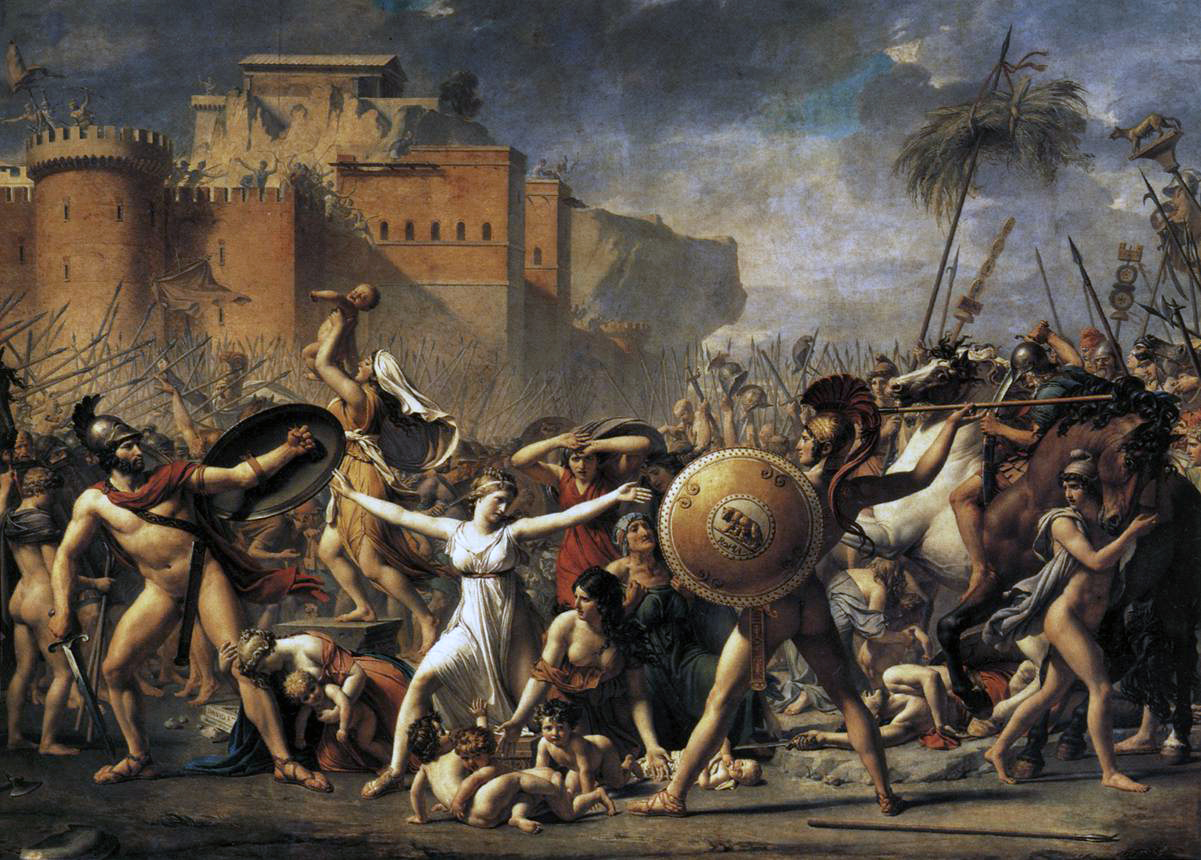(F
rench, 1748–1825) |
| Self-portrait - Jacques-Louis David in 1794 - oil and stretcher on canvas (81 x 64 cm) - Louvre Museum (Paris) |
In a dispute between two warring cities Rome and Alba Longa, three brothers from a Roman family, the Horatii, agree to end the war by fighting three brothers from a family of Alba Longa, the Curiatii.
The three Horatii brothers, all willing to die for Rome, are shown saluting their father who holds their swords out for them. Of the three Horatii brothers, only one shall survive the confrontation and kill the three Curiatii brothers.
In the bottom right corner, David also represents a woman crying whilst sat down. She is a sister of the Horatii brothers, but is also married to one of the Curiatii fighters; she weeps in the realisation that, in any case, she will lose someone she loves.
 |
| Oath of the Horatii - Jacques-Louis David - oil on canvas (330 × 425 cm) 1784 - Louvre (Paris) |
- In the 1780s David's cerebral brand of history painting marked a change in taste away from Rococo frivolity toward a classical austerity and severity.
- Later serving Napoleon, he developed his Empire style.
- David had a large number of pupils, making him the strongest influence in French art of the early 19th century (Neoclassical).
 |
- Jacques-Louis David - oil on canvas (130 × 196 cm) 1787 - Metropolitan Museum of Art (New York) |
 |
- Jacques-Louis David - oil on canvas (385 × 522 cm) 1799 - Louvre (Paris) |
Cf:
 |
| Cupid and Psyche - François Gérard (1770-1837, French) - oil on canvas (186 × 132 cm) 1798 - Louvre (Paris) |
 |
| Psyche Revived by Cupid’s Kiss - Antonio Canova (1757–1822, Italian) - marble (155 x 168 x 101 cm) 1777 - Louvre (Paris) |
Source: Wikipedia

No comments:
Post a Comment